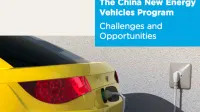World Bank says “new global electric vehicle value chain” worth $250 billion by 2020

“When you do some of the back-of-the-envelope calculations, it really points to a massive shift.”
That’s the takeaway point from a new study – “The China New Energy Vehicles Program: Challenges and Opportunities” – released by the World Bank Transport Office and global management consulting firm PRTM. We recently had the chance to talk to PRTM’s Oliver Hazimeh, who said the study shows that there’s really no chance that plug-in vehicles are not going to make a huge impact in the coming decade. One way is through a new global value chain for electric vehicles that is estimated to reach $250 billion by 2020.
People’s crystal balls differ, but Hazimeh believes that it is “more than doable” and “likely” that somewhere between nine and ten percent of the vehicles sold in 2020 will be plug-ins. Add up all the different pieces that make up these vehicles (especially batteries) and things like the associated expansion at utilities due to a smart grid, and you get to the study’s $250 billion headline number:
Given what we see the OEMs committing to, given the cost curves and what we expect from ICE technology and fuel costs, the trends point to a direction where the economics will create enough pull for that number.
The study authors didn’t need to use outrageous oil prices for 2020 – just $120 a barrel – to get to the 10 percent number. If the real price of oil hits $150 or $160, something Hazimeh said was “more likely,” then some of the pressures get applied even stronger. “When it starts making economic sense, then we think it’s more than the early adopters – the two or three percent – who will buy these things,” he said.
Even 10 percent annual sales is still only two-three percent of the total fleet, but this is still a very optimistic prediction. Hazimeh has been studying these numbers for a long time, though, and hasn’t changed his predictions for 2020 in a big way in the last few years because of the strong efforts China is making to electrify its fleet:
What is really highlighted is that China is ahead, but I would say it’s ahead because, politically, their commitment and understanding of the imperative to move to the plug-in platform is clearer there. You can argue that it’s because of the single-party system, and it’s easier to corral that vision, but it’s there and it’s translated into these initiatives that were set up, right from the beginning, as larger pilots. It’s not about 20 or 30 vehicles, but it’s about a minimum of 1,000 vehicles and they quickly expand them. And they invested heavily in technology around batteries and some of the motor technologies.
If you’d like to see the data and reasoning behind the report yourself, click here (PDF).
[Source: World Bank Transport Office, PRTM]




